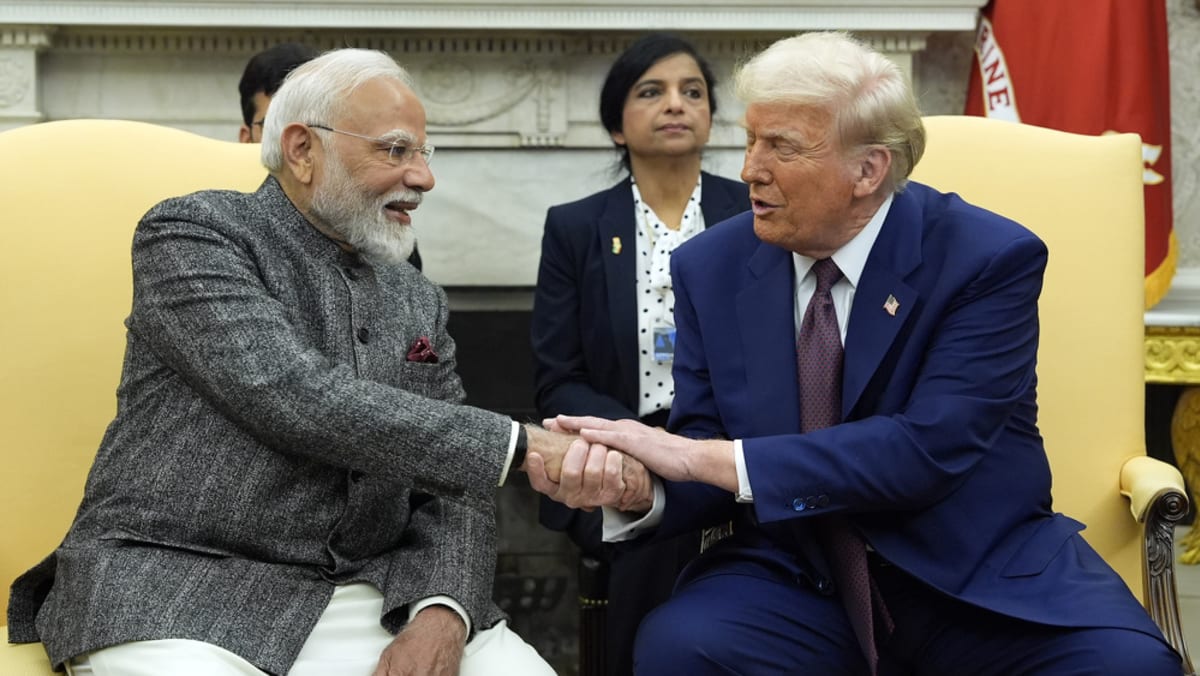Asia
India’s Modi brings a tariff ‘gift’ to Trump talks

Modi and Trump: A Meeting of Strategic Importance
Indian Prime Minister Narendra Modi’s visit to the United States on February 13 kicked off with high stakes, as both leaders sought to navigate the complex landscape of trade tensions and strategic partnerships. Modi arrived in Washington bearing gifts—both metaphorical and literal—in an effort to strengthen ties and address the growing trade disputes between the two nations. The meeting took place just hours after President Donald Trump unveiled a new roadmap for reciprocal tariffs, a move that sent ripples across the global economy and put India on notice. Trump’s latest trade salvo was part of a broader strategy to level the playing field for American businesses and strengthen U.S. economic and national security. However, the question on everyone’s mind was whether India, a key strategic partner, would be exempt from the new tariffs or face the brunt of Trump’s protectionist policies.
Trump’s Trade Agenda: A Mixed Signal for India
President Trump has long been critical of India’s trade practices, often referring to the country as a “very big abuser” of unfair trade policies. His administration has already imposed tariffs on Indian steel and aluminum imports, a move that has had a significant impact on India’s exports to the U.S. Despite the warm relationship Trump and Modi have shared in the past, the simmering trade tensions threatened to overshadow the visit. In the Oval Office, just hours before Modi’s arrival, Trump reiterated his concerns about India’s trade practices, stating, “India’s a very hard place to do business because of the tariffs.” These words set the tone for what promised to be a challenging conversation, with India hoping to secure concessions and avoid further escalation in the trade war.
India’s Strategic Play: Balancing Trade and Cooperation
Modi’s mission was clear: to persuade Trump to grant India exemptions from the tariffs and to explore new avenues for cooperation that would benefit both nations. The Indian Prime Minister came prepared with a basket of concessions, including fresh business deals and the promise of collaboration on key strategic issues, particularly in the Indo-Pacific region. By offering to address some of the U.S. concerns on trade, Modi hoped to create a win-win situation that would not only ease tensions but also pave the way for deeper economic and military ties. However, the question remained whether these gestures would be enough to assuage Trump’s concerns and prevent a full-blown trade war.
The China Factor: A Common Ground for Cooperation
One area where India and the U.S. found common ground was in their shared concerns about China’s rising influence. As Trump’s tariffs were largely aimed at countering China’s trade practices, India saw an opportunity to position itself as a reliable partner in the region. Modi emphasized the importance of cooperation in addressing the challenges posed by China, particularly in the Indo-Pacific, where both nations have significant strategic interests. By framing India as a key player in balancing China’s power, Modi hoped to win Trump’s support and secure a more favorable trade arrangement. The implicit message was that a strong India-U.S. partnership would not only benefit both nations but also serve as a counterweight to China’s growing dominance.
The Broader Strategic Partnership: Beyond Trade
While trade was undoubtedly the headline issue, Modi’s visit also focused on strengthening the broader strategic partnership between India and the U.S. The two nations have been working closely on defense cooperation, with India emerging as a key buyer of American military hardware. Modi highlighted the potential for increased collaboration in areas such as technology, energy, and infrastructure, where both countries could leverage their strengths to mutual benefit. Additionally, the discussion touched on shared global challenges, including terrorism, climate change, and cybersecurity, where coordinated efforts could yield significant dividends. By emphasizing the multifaceted nature of the India-U.S. relationship, Modi sought to shift the conversation beyond trade and toward a more comprehensive partnership.
The Road Ahead: Success or Stalemate?
As the meeting concluded, the big question was whether Modi had succeeded in convincing Trump to ease the trade pressures. While the optics of the visit were positive, with both leaders expressing optimism about the future of the relationship, the concrete outcomes remained unclear. India had offered concessions and highlighted its strategic importance, but Trump’s unpredictable approach to trade policy left room for doubt. In the end, the success of Modi’s mission would depend on whether the U.S. was willing to balance its trade demands with the broader strategic imperative of maintaining a strong partnership with India. The coming months would reveal whether this high-stakes diplomacy had paid off or if the trade war would continue to cast a shadow over the India-U.S. relationship.











